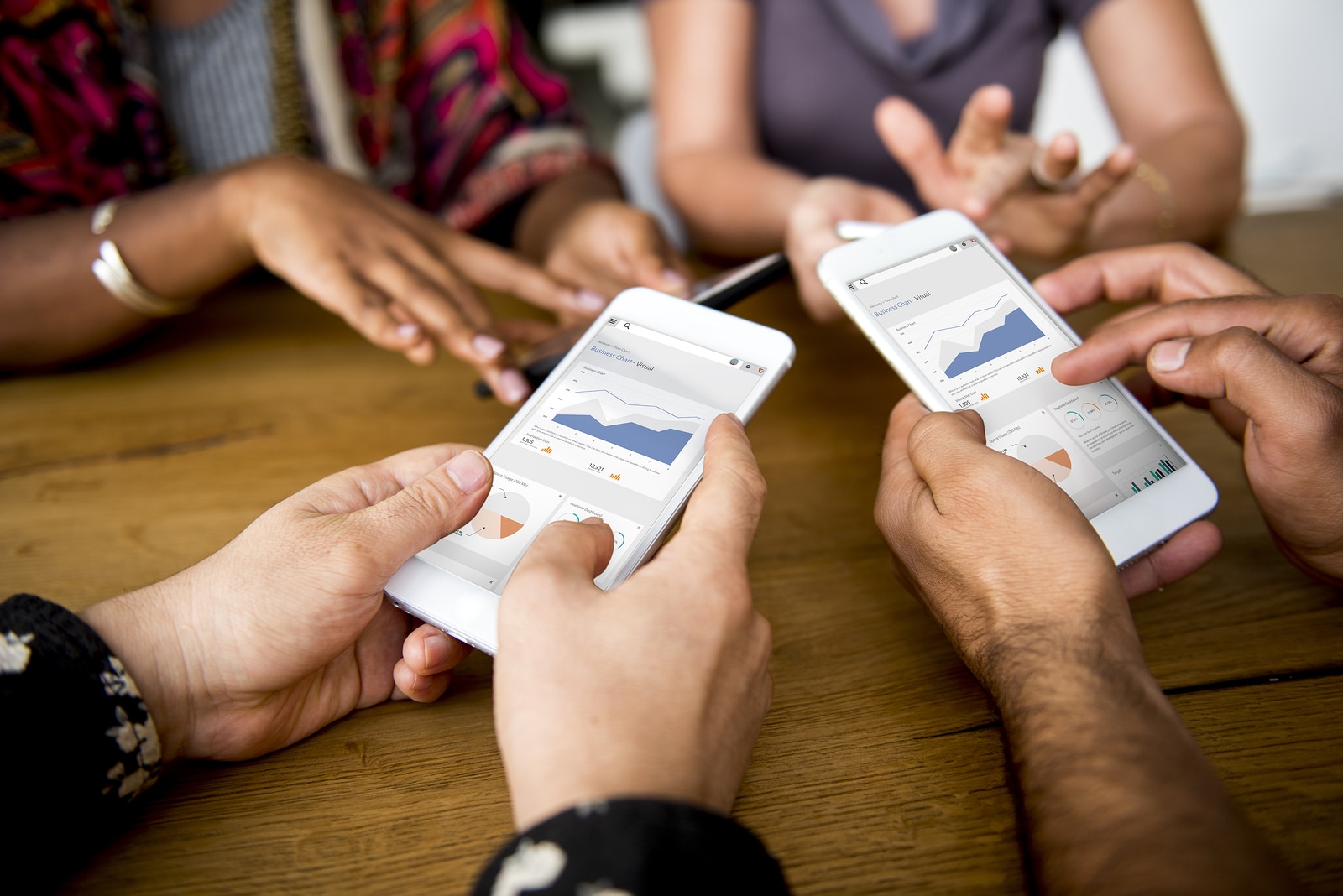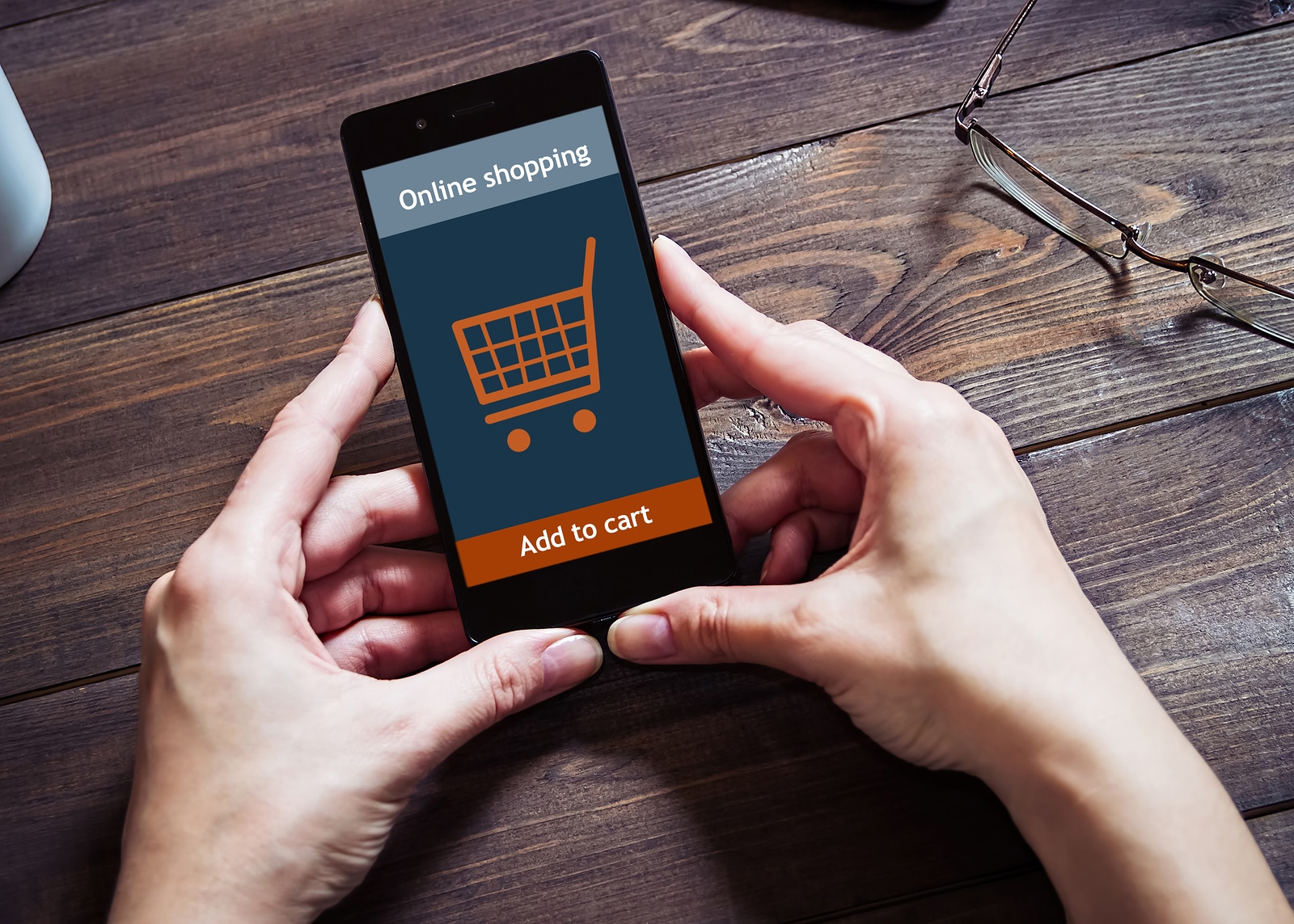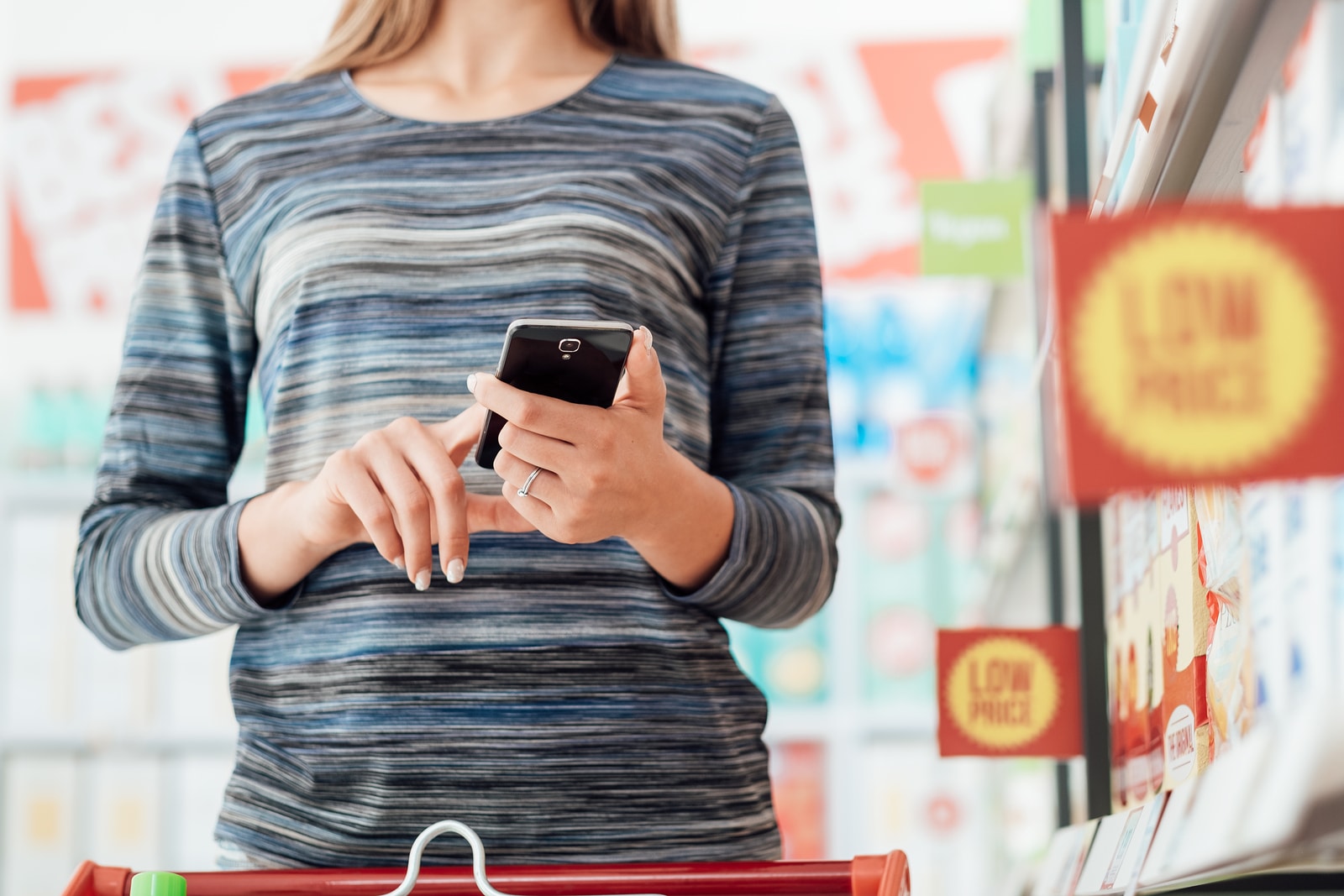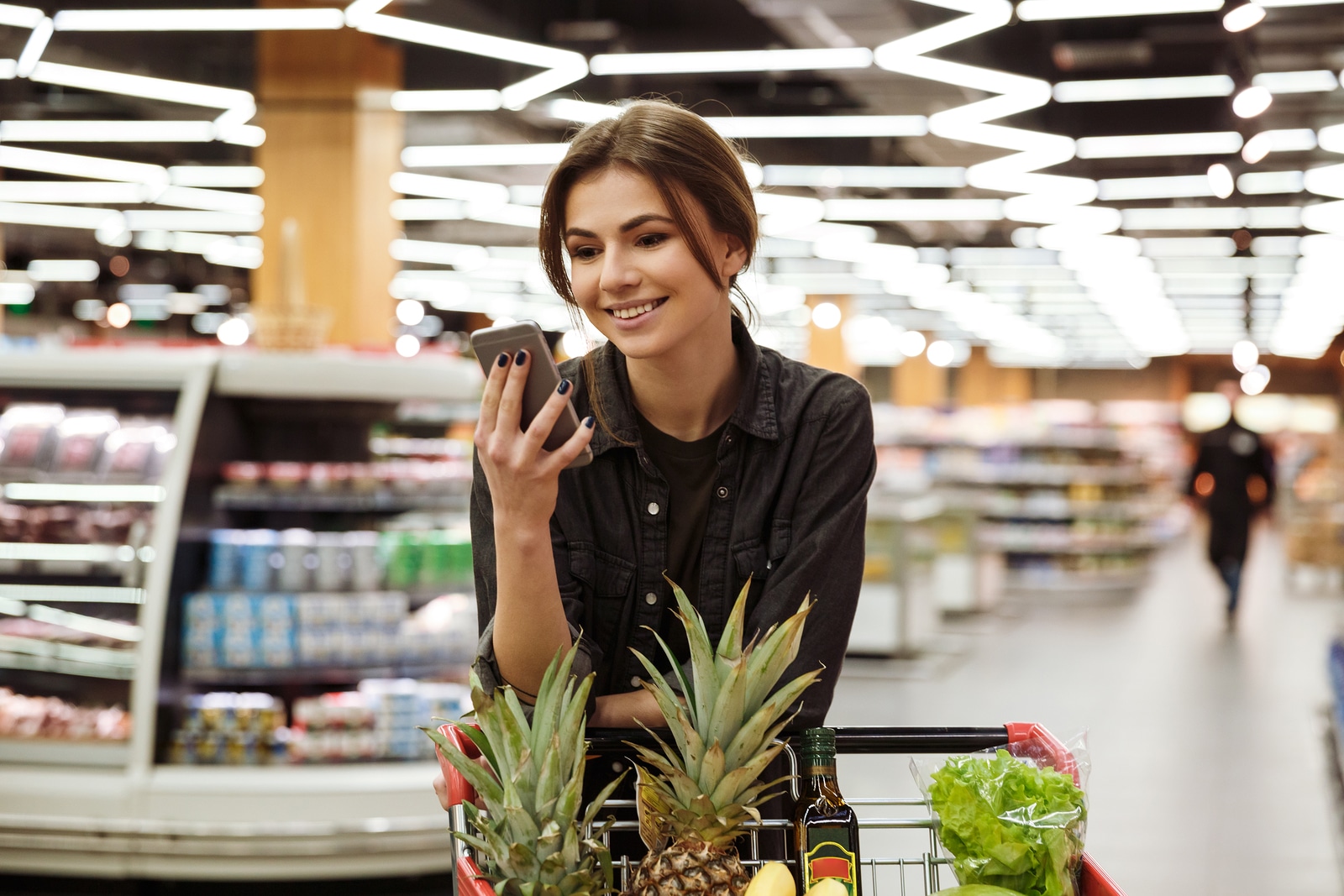While 2018 has only just begun, some mobile advertising trends are already taking shape. A few, like video advertising and the increased need for brands to protect themselves against ad fraud, have been emerging for a while. Continue reading “The app-based CPG mobile advertising trends already shaping 2018”
Category: b2b
The future of video advertising on social media: Why your brand must be mobile
The two fastest growing segments in the digital space are video and social media. So, when it comes to where to place video advertising, social media is a high priority for marketing professionals. Continue reading “The future of video advertising on social media: Why your brand must be mobile”
Webinar: eBay, Button & Shopkick on the power of mobile commerce
Mobile commerce is skyrocketing. Shoppers are gravitating toward the rapidly growing channel through all stages of the journey, and are expecting relevant and personal experiences.
We’re teaming up with eBay and Button to share first party data to help retailers and brands identify where to focus their attention to reach today’s consumer. Join us for insights on mobile — today’s fastest growing channel, and a map for success in our omnichannel shopping environment.
Just some of the topics we’ll cover include:
- Mobile matters: why apps are leading the charge, where the industry is headed, and what actually converts among consumers on mobile
- Real-time is key: tracking and reacting to shopper behavior across environments, stores and platforms is critical
- The importance of partnerships in understanding and responding to today’s fragmented shopping experience
- A case study on how eBay, Button and Shopkick uncovered a new audience and drove incremental mCommerce sales
When: March 8, 11am PT / 2pm ET
Mobile app marketing: strategies to generate the highest ROI
Mobile app marketing is a growing way for companies to reach out to consumers at the right time. Continue reading “Mobile app marketing: strategies to generate the highest ROI”
A customer rewards program case study on effectiveness for CPG brands
While we can tell our clients how effective rewards programs are, the best way to demonstrate this is through a rewards program case study. Continue reading “A customer rewards program case study on effectiveness for CPG brands”
Valentine’s Day Shopping Habits: Survey Results
It’s that time of year again, when kids bring valentines to school, romantics make grand gestures and the flower and chocolate businesses boom. We’ve polled Shopkick users to find out what kind of gift giving they are planning this year, and how gender, family, and age come into play.
According to our survey, men are spending more than twice as much as women: an average of $207.60 on their significant other and $70.24 on their children. On the other half of the heart, women plan to spend $89.54 on their sweeties and $40.30 on the little ones.
Some more key insights on Valentine’s day shopper behavior include:
- Guys are more giving: More men (40 percent) than women (31 percent) believe it’s “very important” to give a Valentine’s Day gift
- But most don’t care about getting in return: Fifty-five percent of men don’t find it at all important to receive a gift, and not many of either gender find it very important; only 17 percent of women and 11 percent of men
- Getting crafty: Women are more likely than men to make a gift (15 percent vs. 7 percent) or give experiences (16 percent vs. 10 percent)
- Tried and true: The most popular gifts are the traditional dinner out (27 percent) or flowers and chocolate (21 percent)
And finally, despite the reports that having children kills romance, mom and dad still plan to celebrate Valentine’s Day. Seventy-six percent of parents consider themselves romantic and 38 percent start planning the big day a month in advance; 55 percent are more excited about Valentine’s Day since becoming a parent.
Wishing all of our partners and friends a very happy V-day!
Uncover the consumer insights you’re missing with social media
Kim Bielak, Marketing Manager, Shopkick
It’s 2018 and no secret by now that social listening is a great addition to your market intelligence toolbox. But is your brand really taking advantage of the wealth of information about your consumers that you could be harvesting from this rich digital soil?
As a Marketing Manager responsible for both our social media channels and various market research sources at Shopkick, pouring through insights, feedback and personal stories from our users on social media is one of the most rewarding parts of my job. It never fails to give me a refreshing new perspective on why we do what we do.
So, whether you’re new to social media or just looking for new ways to share the voice of your consumer throughout your organization, here are 4 ways I’ve come to find social media incredibly valuable in finding insights that can translate into real business impact.
- Understand Your Core Audience Demographics & Interests
You have at least 4 communities with platform-provided analytics at your fingertips to understand who your core customer is, and your sample size is generally not insignificant. Not only can you triangulate age, gender, household income, and other demographic information from sources like Facebook and Twitter Analytics with your other customer data sources, you can also find an enormous source of additional color from asking questions such as what your fans’ favorite music, movies, and books are.
One way you can do this is to type queries directly into Facebook Search like “[Musicians] liked by people who like [Brand].” (Not a bad way to source talent or options for your next spokesperson, eh?) Similarly, services like DemographicsPro will analyze your followers on Instagram and can tell you their affinity with other Instagram accounts, media, and even their most-used hashtags.
- Listen and Look for Patterns

You know the saying: you have two ears and one mouth for a reason. Your customers are out there telling you exactly what they like, exactly what they don’t like, and exactly what they want, and you just have to pay attention long enough to notice it!
First, find out where your brand is coming up organically in conversation by doing a search for your brand’s handle, hashtag, or search term. If a consumer has gone as far as to include you in a public post, it often means one of two things: they absolutely love you, or they absolutely hate you. Be prepared for and really listen to both. While the former is often hard to hear, don’t be too quick to brush it off as whiney behavior. Complaints are often one of your most valuable sources of data, providing clues as to why you’re losing sales, or previously loyal customers. Even if you believe your brand is in the right, remember, your positioning is always in the eye of the consumer, and if you’re seeing a certain perception over and over, you know where you have work to do.
Then there’s the brand love (the best part!). These are your advocates. Are there patterns, or common and relatable things many of your customers have experienced you can source insights from? At Shopkick, we see people talk about using the app to get their steps in as they walk around the mall, going on Shopkick dates with their significant others, or even using the app as a game with the kids to keep them manageable in the store. These are all insights about the unique way people are using our app we didn’t even have to ask for, and have been repeated time and time again. We’ve even been able to mine Facebook comments about some of the brands we work with and have found second uses for products like cat litter and yogurt containers!
From there you can then do the same types of searches for your prospects, competitors, and the larger cultural conversation. If you’re looking to launch a new product, go into a new vertical, or pursue a new target audience, see how consumers are already talking about it. A yogurt brand might search terms like “Greek yogurt,” #Whole30, or even just #breakfast to see what consumers think is significant enough to share. And pay attention to trending topics on Twitter and Google trends, as they are often the first places the next big thing pops up before your insights team has had a chance to do a focus group about it.
Finally, I venture as far as to suggest following your customers and your target audience. Don’t be creepy about it, but within reason, many people get excited when their favorite brands follow them back! This is one of your purest forms of ethnography, as you have a chance to see your customers in their everyday environments. Notice what they include in their profiles, the photos they share, and the moments they find significant. This is truly one of the greatest ways to put a face to your consumer and foster a sense of empathy with their hopes, challenges, and ultimate business needs.
- Ask Them!
I’m not suggesting you ask for your fans’ household income and divorcée status on Facebook, but do ask engaging questions as a great way to acquire some qualitative quotes and insights. For example, we ask our users what they’re saving their Shopkick reward points (called kicks) for all the time. It was on Facebook that we discovered the wealth of users saving their kicks for Disney vacations, but were doing so by cashing out for Target gift cards in the app, and then re-buying Disney gift cards in-person at their local Target stores! If we had only looked at our internal gift card redemption data, we would have seen what we already knew: Target was one of our most popular gift cards. Never would we have realized that so many of our users actually wanted us to add the option of a Disney gift card instead. Needless to say once we added it, our users were very pleased.
Another way to translate these insights into more quantitative data is to export your comments and code them. We recently asked our users what else they wanted to earn kicks for and were able to codify over 800 responses to determine the most popular requests. Once we found the offers we didn’t have enough representation for that were in high demand, we were able prioritize outreach to new partners and business development. We also had the great added value of new crowd-funded ideas we may not have previously thought of, such kicks for experiences, video streaming, and, once again, rewarding people for getting their steps in!
- Create a Testing Ground

Finally, testing is one of my favorite uses of social media that often gets overlooked. Say you’re looking to run a major new ad campaign, or exploring a messaging refresh – you have 365 days to experiment with the light version on social media before you commit to your whole investment! At Shopkick, for example, we’re planning a brand campaign where we’ll be delivering a wish in every state across America this year. Not a small program to risk the types of responses we were going to get in. So, while we were still in concepting, we asked users what they’d wish for first on social media. Not only did we get a flood of responses to demonstrate that the campaign definitely resonated, but we also got tons of insights from fans’ wishes to guide the direction of the overarching campaign message itself. You may not be able to A/B test an ad or a new product every day in the real world, but with social media you have the ability to test and iterate on an idea rapidly until you strike something that truly makes an impression with your community.
At the end of the day, social is only one piece of a full market research toolkit, but it’s certainly one with a lot of unbridled potential, and not to mention wildly cost effective. The rise of social media, big data, and other digital intelligence sources should not become a reason to neglect traditional research methods such as focus groups, IDI’s and prospect surveying. However, if you haven’t yet recognized the power of social media, don’t miss an incredible opportunity to bring the voice of the consumer to your organization. It’s a powerful way to continue to inspire and remind your team of the real faces and the real people whose lives your brand touches each and every day.
Tips for mCommerce customer relationship marketing
Customer relationship marketing is a segment of marketing that focuses not on the immediate sale but rather on ongoing business. Obviously, the value of a loyal customer is high. In fact, it’s estimated that a 5% increase in retention can lead to a 25% increase in profitability. However, keeping customers shopping with you can be a challenge, especially when you consider how many options these customers have. This is especially true for emerging channels, like mCommerce, where just about every major brand or retailer is trying to gain market share.
 For an effective customer relationship marketing campaign, companies need to bring together three key components: They must create trust, establish a customer connection, and reward customer loyalty. All of this needs to occur in a digital space, which can be a challenge without the face-to-face contact that a brick-and-mortar business can deliver. Using innovative mobile apps that remember your customers and encourage them to revisit your brand can help you develop a customer relationship marketing strategy that offers true, enduring value.
For an effective customer relationship marketing campaign, companies need to bring together three key components: They must create trust, establish a customer connection, and reward customer loyalty. All of this needs to occur in a digital space, which can be a challenge without the face-to-face contact that a brick-and-mortar business can deliver. Using innovative mobile apps that remember your customers and encourage them to revisit your brand can help you develop a customer relationship marketing strategy that offers true, enduring value.
Creating Long-Term Customer Trust
Building long-term customer engagement in mCommerce requires establishing your brand as a leader not just in your industry but also in technology. That means providing a secure environment where consumers will feel comfortable sharing their mobile information. In one study, just less than half of consumers reported that they’d only feel comfortable shopping via mobile if their phone number was protected. About 44% reported that they were concerned that mobile payment options were not secure. Allaying these consumer concerns requires offering:
- Transparency: A clear user agreement, showing exactly how your company collects data and how that data will be used, goes a long way toward improving the perception of your company’s trustworthiness.
- Payment technology: The accounts that your company accepts payments through must use the most recent security technology to prevent hacking and other malicious attacks. Digital wallets are also growing in popularity, with 51% of consumers wanting to use retailer apps for making faster purchases through such methods.
- Usability: More than half of consumers report that a poor experience on a mobile site makes them want to disengage with a company. You only have one chance to make a good mobile impression, so ensuring your site is performing at its best is key to keeping customers engaged.
You need to be able to build trust with consumers if you want them to engage with your brand online. However, trust alone won’t keep consumers coming back. For that, you need to use your app to cater to your consumer on a personal level.
Leveraging a Personal Touch in Customer Relationship Marketing
Artificial Intelligence (AI) is becoming a popular option for companies that want to create a closer connection with their consumers. AI allows you to remember a consumer, predict their actions, and make recommendations based on those predictions. This is a strategy that retailer Cosabella implemented, which reportedly led to a 30% improvement in conversion rates.
The company used an AI program, called Albert, to help better identify potential customers on a global basis. Albert was able to review millions of pieces of trend data and then make predictions on when and where those trends would be most popular. It was a job that would take the average human, or even agency, months to tackle.
Using a few basic data touchpoints—like location and prior purchase history teamed with customer profiles—can help you target the right offer to the right customer.
Of course, not every company needs to roll out a high-tech program. Instead, using a few basic data touchpoints—like location and prior purchase history teamed with customer profiles—can help you target the right offer to the right customer. It’s also possible to use this data to determine genuine signals of purchase intent and to filter out fraudulent traffic. This saves you marketing time by allowing you to focus on the best prospects. It also creates a personalized connection that you can leverage to build customer relationships. The final step in all of this is to use a customer rewards program to incentivize purchases.
Round Out Customer Relationship Marketing With Rewards
The process of customer relationship marketing does not end at purchase but rather is an ongoing strategy that requires continued engagement. One way to manage this is by offering a customer rewards program via a mobile app. Such programs allow you to incentivize purchases at less of a cost. Here is how the system works:
- The customer downloads a shopping app, like Shopkick, and uses that shopping app to earn rewards for engaging with your products or retail locations.
- When the customer collects enough points (known as kicks), they can redeem them for gift cards. This encourages a return visit, where the customer can purchase even more, and earn yet more points.
- The purchase cycle continues.
These rewards benefit the customer and the company since you avoid the margin cut of an immediate discount and instead deliver on brand affinity. Finally, it makes the customer feel like you value their repeat business, ultimately building loyalty.
Building customer trust, offering a personalized experience, and finally, rewarding loyalty all work together toward developing a strong customer bond. The customer comes to rely on your brand because they believe it is focused not only on the bottom line but also on their satisfaction. These cornerstones of customer relationship marketing allow you to build consumer loyalty in the online marketplace, even when those customers have virtually thousands of options available to them.
Shopkick can be a valuable part of your customer relationship marketing strategy. For more information on becoming one of our partners, contact us.
Image courtesy MrMrsMarcha
App-based fast food advertising: Is the ROI worth the cost?
Fast food advertising is competitive, and not just for converting customers: Given the sea of competition, it can be a challenge just to get your advertisement viewed by consumers in the first place. Nearly $1.5 billion was invested in fast food advertising in 2016, and that number is steadily growing. Many marketers in the industry are seeking ways to stand out among the noise. One of the ways they’re doing this is through app-based fast food advertising.
 App-based advertising offers some advantages that other advertising methods don’t. This is especially true in the fast food industry, where a QSR (quick service restaurant) might have only seconds to grab a customer’s attention.
App-based advertising offers some advantages that other advertising methods don’t. This is especially true in the fast food industry, where a QSR (quick service restaurant) might have only seconds to grab a customer’s attention.
Increasing Customer Control With App-Based Fast Food Advertising
One unique QSR concept was a brand called Eatsa. The restaurant was almost fully automated, and some believed that would change the QSR customer experience. While Eatsa grew a bit too quickly and outpaced demand, there are still some valuable things we can learn from it.
Customers at Eatsa ordered and paid via an iPad. Their order transferred to a kitchen staff who prepared the food and placed it in a glass cubicle for pickup. Throughout the entire process, the customer had no interaction with any employee. This unique concept was a bit much for the public at the time; however, it did incorporate one major theme of the future of QSRs: increasing customer control through technology.
App-based advertising follows this customer empowerment theme as consumers have more control over when they’re exposed to advertisements, what advertisements they watch, and where they watch them. Because consumers must grant the apps permission to reach out to them, they are in the driver’s seat. It’s also more likely consumers will then perceive an ad as something they’ve chosen to view, rather than as a disruption. These “opt-ins” are very important to QSR mobile marketing strategies because they create a connection with an engaged customer.
Using Gamification to Garner Opt-Ins and Improve Customer Engagement
To take the consumer connection one step further, consider gamifying your app-based advertising. Gamification is a way of taking a non-game and giving it a game-like feel; it’s also become a huge component of mobile apps. Blimpie’s Blimpie Run campaign is a great demonstration of one successful application in QSR.
The QSR’s goal was to increase adoption of its customer loyalty program. They set up a game app that allowed users to navigate a Blimpie’s-based world as the character Del E. Fresh. When downloading the app, users were asked, but not required, to opt-in to the Blimpie eClub, which they did in impressive numbers. The company saw a 38% opt-in rate, far exceeding the 2 to 10% opt-in rate of previous campaigns.
An app doesn’t have to be entirely game-based, but basic gamification components can have a large impact.
- Motivation: Users are seeking out rewards, whether it be money, recognition, or just a feeling of personal accomplishment. In an app, the motivation might be a desire for deals or rewards program points that are exclusive to users of the app.
- Mastery: This is the challenge part of the game. Contrary to popular belief, consumers don’t want something for nothing. They want to feel as though they’ve earned something through a challenge. A good example of this is the Shopkick shopping rewards app. In Shopkick, users are rewarded for finding, scanning, and purchasing certain items with points—called kicks—which can later be exchanged for gift cards.
- Triggers: The trigger is the event that creates the positive effect, which causes the user to associate the event with a positive experience. With an app, a user’s smartphone may ding or buzz to notify them that they’re near an opportunity to earn rewards. This notification sound will trigger a positive feeling in them which drives them to begin using the app.
If conversion is the main goal in using mobile apps for your fast food advertising campaign, then gamification will give you the strongest ROI. Games resonate with consumers, get them to engage with your brand, and create a positive connection which ultimately boosts sales.
Using Mobile Apps to Time Fast Food Advertising
The thing that has the highest conversion potential in fast food advertising is reaching your consumer at the right time. For example, someone seeing a commercial about an all-you-can-eat rib deal at a local eatery at 10 a.m. probably isn’t going to be interested. However, if they see that same deal as a takeout special announced on an app on their way home from work, then that has conversion potential.
That’s because the message reaches those consumers at the moment when they’re in the kind of mindset to visit a QSR. Receiving a notification via the app can help lead them to timely purchase. This is something that’s unique to mobile apps. No other medium allows you to reach your consumer at the very moment when they traveling near one of your locations—during a time when they’re likely in a buying mindset—with such incredible precision and thus offer such a high potential for conversion.
No other medium allows you to reach your consumer at the very moment when they traveling near one of your locations—during a time when they’re likely in a buying mindset—with such incredible precision.
Mobile apps allow you to reach out to traveling consumers, enable you to engage consumers through gamification, and empower consumers to choose the advertising they view. All of these aspects of app-based fast food advertising, executed effectively, combine to deliver an increased ROI.
If you’re considering a mobile app to pull more customers into your restaurants, consider Shopkick’s rewards-based platform. We partner with a wide range of QSRs to incentivize consumers and reach out to them when they’re likely to make a purchase. For more information, contact us.
Image courtesy fizkes
Creating customer value in retail: 5 ways to incentivize your customers
Creating customer value isn’t just about gaining more revenue from customers, it’s also about building relationships with modern customers to keep them returning to your locations. That’s not to say customer value doesn’t have its impact on revenue: Customers who think a retailer is providing excellent service spend 17% more than those who don’t. Part of that excellent service is making customers feel valued, and you can do that by incentivizing them.
 Often, we see the word “incentivize” and immediately think “discount.” Jumping to an immediate discount to incentivize customers isn’t the way to make them feel valued. In fact, lowering your prices could potentially lower their value perception of your products. To truly create customer value, you need to focus on five key factors in incentivizing your customer: personalization, engagement, rewards, recognition, and convenience.
Often, we see the word “incentivize” and immediately think “discount.” Jumping to an immediate discount to incentivize customers isn’t the way to make them feel valued. In fact, lowering your prices could potentially lower their value perception of your products. To truly create customer value, you need to focus on five key factors in incentivizing your customer: personalization, engagement, rewards, recognition, and convenience.
Strategy #1: Create Customer Value by Focusing on Pain Points
Pain points, in relation to retail, are the real or perceived problems that your customers are trying to solve when they visit your location. For retailers, this is obviously that they need products, and they need someplace to purchase them. These individuals could choose any retailer. Examining their pain points is how you’ll identify the unique service your location offers, which you can then use to make the customer feel you’re catering directly to them. Most pain points in retail can be broken down into four basics:
- Convenience: Customers may choose a specific location because it’s convenient for them, as it’s close to their home or workplace, or because it offers quick service.
- Cost: Price conscious consumers will generally seek out lower cost, discount options.
- Selection: A location may be chosen because a customer has specific needs. For example, they may choose to shop at an organic market due to dietary restrictions.
- Service: For some consumers, in-store services like bakeries, butchers, and deli counters are things they seek when they’re looking for a location to shop.
The best way to determine what pain points drive customers to your location is to survey them. Simply ask them to rank those categories in order of importance. Then, you can focus your efforts on catering to the most important. If access is the reason, seek out ways to speed up checkout. If service is what they want, offer more in-store amenities like cooking demonstrations or seasonal specials. This is a way to make customers feel like you’re catering to their very specific needs in-store. Another way to do this is through community engagement.
Strategy #2: Create Customer Value by Engaging With the Community
Customers don’t just want a store that makes them feel valued, they want one that values their community. Sponsoring local schools, sports teams, and other points of local pride—as well as sourcing local goods—serve to create a community connection.
Locally grown items are in high demand right now. By 2019, locally grown foods are expected to generate about $20.2 billion in sales, up from $11 billion in 2014. A retailer that wants to engage with the community can also take advantage of this movement by locally sourcing some items. This offers retailers a connection to the community that will make customers feel valued.
Strategies #3 & 4: Rewards and Recognition as a Means of Creating Customer Value
Rewards and recognition go hand-in-hand, as they’re ways to incentivize purchases while also showing appreciation for your most loyal customers. Rewarding customers is simple through a shopping rewards platform like Shopkick, which allows you to offer an incentive to shop while also limiting the cost to you. Here are a few ways that a shopping app program benefits both the customer and the retailer:
- Offers collectible points instead of discounts: With shopping app rewards, consumers receive points that they can use for future purchases. This offers the same incentive as a discount, without the same cost to the retailer because consumer perception of the value of points is often higher than the dollar amount.
- Promotes savings on future merchandise and return visits: It has been shown that about 47% of the time consumers prefer being able to save points toward future merchandise purchases over receiving an immediate discount. For the retailer, this point-saving encourages a return visit—and more spending—from the customer in the future.
- Ease of use trumps coupon clipping: For the consumer, a rewards program is much easier to use, especially when it’s tied directly to their smartphone. Instead of seeking out deals or clipping coupons, they’re able to collect rewards points simply by making purchases. For retailers, these programs are easier to keep track of than coupons and discounts.
With rewards programs, the benefits for retailers are twofold: You reward customers for visiting your location while enticing them to spend more, and you create loyalty and inspire return visits as customers feel recognized and respected by their retailer.
Strategy #5: Creating Convenience Through Tech
Consumers these days are driven by a need for convenience. They want to be able to find items easily and finish their shopping quickly. Nearly three-quarters of consumers report that technology has made it easy to take their business elsewhere. When consumers are looking for a retailer, technology can be a way to pull market share from your competitors. All you have to do is offer the technology that makes it clear you’re the more convenient choice. Consider app-based options like:
- Better budget planning – Consumers can get familiar with products and prices before they leave the house. This allows them to set a budget for their shopping that they can stick to, as they can get a good idea of how much they’ll need to spend before they get to the store.
- Product comparisons: Once consumers find the products they need during the preshopping phase, they can compare the available options. Consumers are savvy shoppers these days and are easily able to research items online. Offering the ability to compare products via mobile can help build confidence in your location.
- Alerts by geolocation: Consumers always appreciate the opportunity to earn rewards and in-store events, and app-based alerts can notify shoppers of these events while they’re in the seemingly endless shopping aisle.
Providing the technology that makes shopping easier for your consumers will make them feel valued. It will also help to create the connection that keeps consumers returning to your location, even when there are virtually limitless places they could take their business.
Creating customer value helps retailers build long, lucrative relationships. Personalization and community engagement work to provide an emotional connection between you and the consumer. Rewards and recognition show that you appreciate your customer’s business. Finally, convenience makes shopping with you easier than shopping with your competitors. All of these strategies incentivize your customers by establishing a mutually beneficial relationship.
Shopkick helps our partners create customer value by giving them the technology they demand while incentivizing their purchases using redeemable rewards points. For more information, contact us.
Image courtesy stokkete
The fast food advertising statistics every QSR marketing manager must know
The quick service restaurants (QSR) industry used to be one we thought of as tech-proof.
Continue reading “The fast food advertising statistics every QSR marketing manager must know”
Why the retail mobile app isn’t a temporary trend
The retail mobile app isn’t a fad. It’s an evolving medium of communication between the consumer and the store. Continue reading “Why the retail mobile app isn’t a temporary trend”












